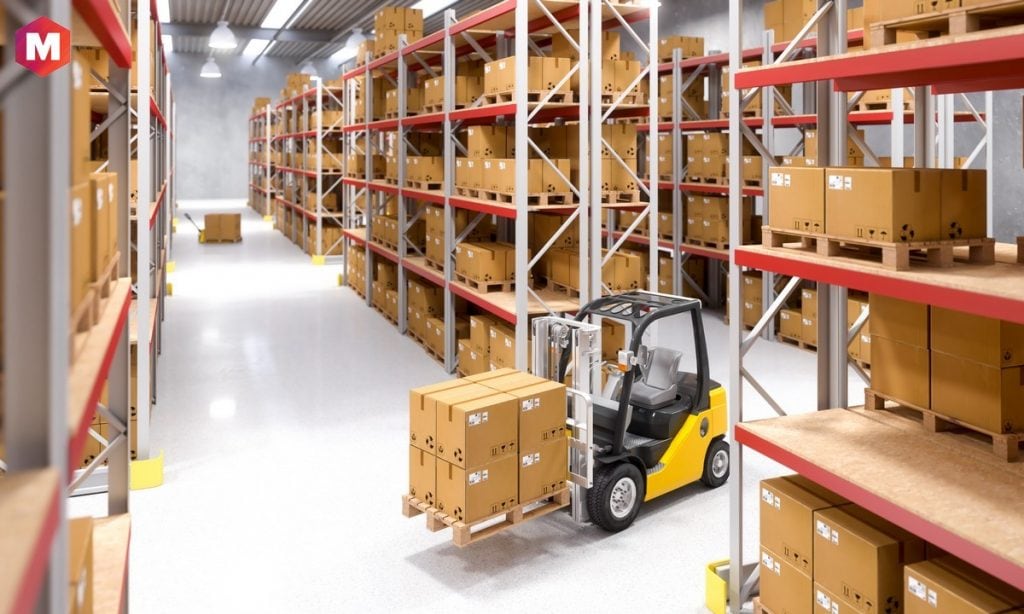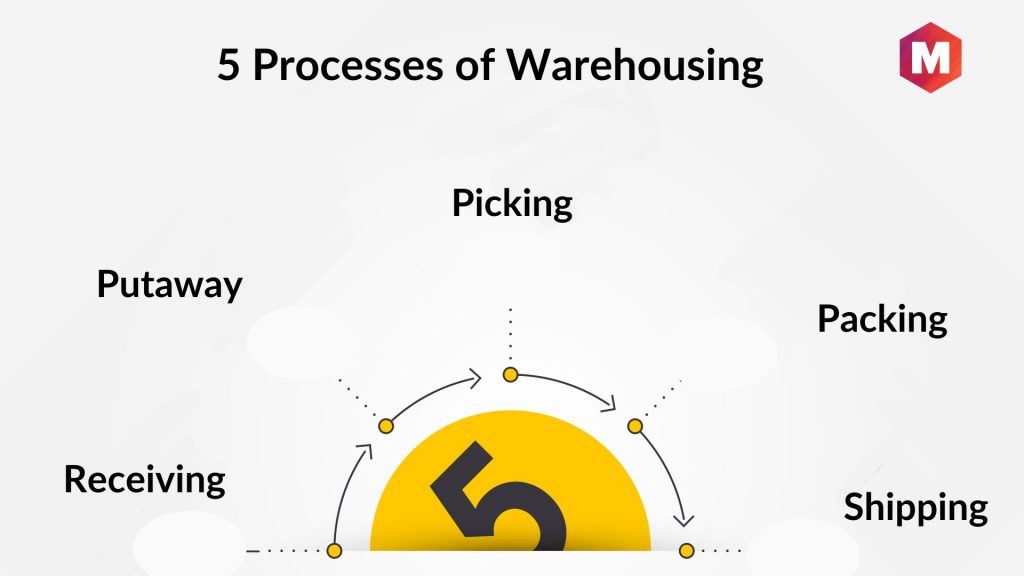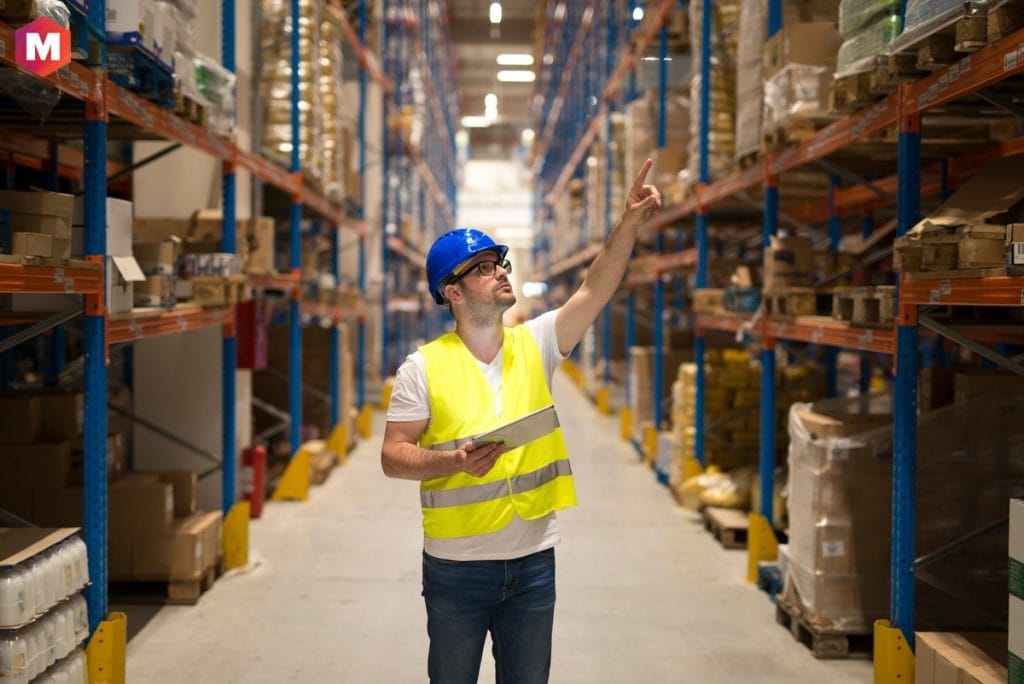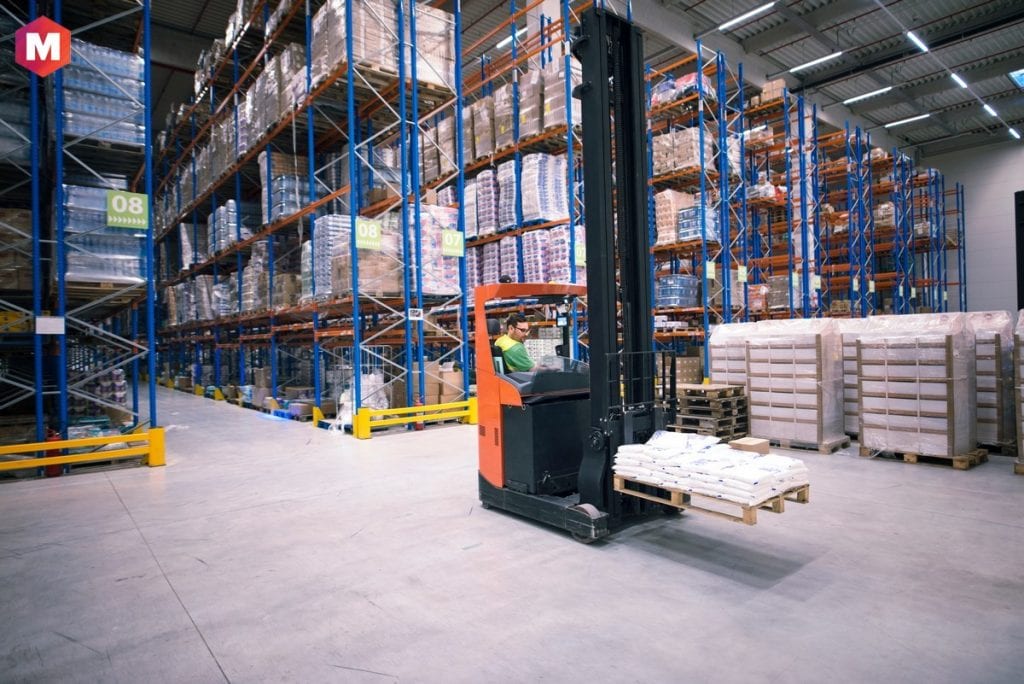Warehousing is a crucial part of the supply chain process that provides a storage facility. Warehouses are used to store goods and materials, improve the efficiency of order fulfillment activities and act as a central hub for distribution. By having easily accessible inventory in one location, companies can save time and money by getting products to customers quickly and efficiently. Warehousing can play a key role in streamlining the order fulfillment process and helping ecommerce businesses manage their operations more efficiently.
Warehousing is a powerful tool used by businesses in all industries to store large, physical inventory before sending it out for sale or distribution. Warehouses serve as the bridge between the production and shipment of goods; helping you efficiently store and transport products to end consumers. Warehousing also facilitates inventory management, which helps reduce costs associated with stocking and maintaining the proper amount of goods.
Table of Contents
What is Warehousing?
Warehousing is the process of storing goods and materials, generally through the use of large warehouses or storage facilities. Warehouse operations involve the management of inventory, distribution centers, supply chains, and other storage spaces. Warehousing professionals must be knowledgeable in warehouse logistics and the effective use of warehouse management systems.
Warehousing services include a range of activities, from receiving and storing goods to preparing orders for shipment and tracking stock levels. Warehouses have to be managed well to ensure that inventory is available when needed and properly stored for maximum efficiency. In addition, supply chain management must be closely monitored to ensure that goods are delivered on time and within budget.
When selecting a warehousing provider or solution, it’s important to consider factors like storage space requirements, the types of products being stored, and the geographic reach of the warehouse. Warehouses should be equipped with the necessary equipment and personnel to manage inventory, process orders, and handle customer inquiries. Additionally, it is important to ensure that safety protocols are in place to keep employees safe and secure while on the job.
Why is Warehousing Important?
Warehousing is important because it allows businesses to keep inventory levels low while still being able to meet customer demand. By storing goods in a warehouse, businesses can avoid having to keep large amounts of inventory on hand. This helps to save on space and allows businesses to invest their money in other areas, such as marketing or research and development.
Warehousing also helps businesses to protect their inventory from damage. Goods that are stored in a warehouse are less likely to be damaged than goods that are stored in a retail environment. This is because warehouses are designed to store goods safely and securely. In addition, a warehouse management system can help businesses to save on costs. By storing goods in a warehouse, businesses can avoid the need to rent or purchase additional storage space. Warehousing can also help businesses to save on labor costs. By storing goods in a warehouse, businesses can avoid having to hire additional staff to handle inventory.
Warehousing is an important part of the supply chain because it plays a vital role in ensuring that businesses can meet customer demand. Warehousing allows businesses to keep inventory levels low while still being able to meet customer demand. This helps businesses to save on costs, protect their inventory, and make more efficient use of their space.
What are the 5 processes of Warehousing?
The five processes of warehousing are-
- Receiving
- Putaway
- Picking
- Packing
- Shipping
Receiving
The first step of the warehousing process is receiving. This involves the careful receipt, inspection, and documentation of goods inbound to your warehouse. Warehouses must stay organized and efficient to ensure that goods are properly tracked. With the help of modern technology, many warehouses have automated the receiving process through barcode scanners and tracking systems.
Putaway
The putaway process involves placing received items in their designated storage areas. Warehouses can employ various strategies such as FIFO (first-in-first-out) or LIFO (last-in-first-out) to ensure that inventory is constantly moving and stored properly. Warehouses are often equipped with mechanized systems to automatically put away items in their designated storage areas.
Picking
The picking process involves the retrieval of goods from a warehouse for order fulfillment. Warehouses utilize a variety of strategies such as zone picking, cluster picking, and wave picking to optimize efficiency when retrieving items from storage. Warehouses equipped with mechanized systems can utilize automated pickers or robotic arms to speed up the process.
Packing
The packing process involves safely and securely packaging orders for shipment. Warehouses must use proper packaging materials to protect goods during transit and prevent damage as much as possible. Warehouses with automated packing systems can utilize packing machines or robotic arms to quickly and accurately package orders.
Shipping
The final step in the warehousing process is shipping. Warehouses must ship orders safely, securely, and efficiently to ensure that customers receive their goods on time. Warehouses can utilize carriers such as UPS, FedEx, or USPS to ship orders. Warehouses can also take advantage of shipping software to track packages and streamline the shipping process.
Warehouse vs Distribution Centre
Warehouses are used to store a variety of items, including raw materials, finished products, and parts and components for manufacturing. Warehouses play an important role in the supply chain because they allow businesses to keep inventory levels low while still being able to meet customer demand. Distribution centers, on the other hand, are used to distribute goods to retailers and customers. Distribution centers are crucial in the supply chain because they help to ensure that goods are delivered to the correct destination in a timely and efficient manner.
Warehouses are typically larger than distribution centers. This is because warehouses need to be able to store a large amount of inventory. While distribution centers do not need to store as much inventory because they only need to hold enough inventory to meet the demands of their customers.
Warehouses are usually located near manufacturing plants or ports. This is because warehouses need to be close to the source of the goods that they are storing. Distribution centers, on the other hand, can be located anywhere that is convenient for them to distribute their goods. The main difference between a warehouse and a distribution center is the function that they serve. Warehouses are used to store inventory, while distribution centers are used to distribute goods.
What are the Elements of Warehousing?
The key elements of warehousing are
-
Capacity Planning
Capacity planning is the process of determining the amount of space that is needed to store inventory. This involves taking into account the size and weight of the products, the number of products that need to be stored, and the amount of space that is available.
-
Receiving Inbound Shipments
In order to store inventory in a warehouse, businesses need to receive shipments from suppliers. The receiving process involves unloading shipments from trucks, checking the accuracy of the shipment, and storing the products in the warehouse.
-
Tracking Inventory
Businesses need to track their inventory levels in order to ensure that they have enough products to meet customer demand. Tracking inventory also helps businesses to avoid stock-outs and overages.
-
Storing Products
After receiving shipments from suppliers, businesses need to store the products in the warehouse. Products can be stored on shelves, in bins, or on racks. The type of storage system that is used will depend on the type of product that is being stored.
-
Controlling Climate
Warehouses need to be temperature-controlled in order to protect sensitive products from damage. Warehouses also need to be humidity-controlled in order to prevent mold and mildew from growing on products.
-
Reorganizing
As inventory levels change, businesses need to reorganize their warehouse space. This involves moving products around the warehouse so that they can be stored more efficiently.
-
Retrieving and Outbound Shipping
When customers place orders, businesses need to retrieve the products from the warehouse and prepare them for shipping. Outbound shipping involves loading products onto trucks, labeling shipments, and scheduling deliveries.
Types of Warehousing
1. Private Warehouses: It is a storage facility that is owned by a single company. Private warehouses are used to store the company’s inventory.
2. Public Warehouses: It is a storage facility that is leased out to multiple companies. Public warehouses are often used by businesses that do not have the space to store their inventory.
3. Co-Operative Warehouses: It is a storage facility that is owned by a group of companies. Co-operative warehouses are often used to store the inventory of businesses that are in the same industry.
4. Distribution Centres: A distribution center is a facility that is used to store and distribute products. Distribution centers are often used by retailers and wholesalers.
What is the Role of Warehousing in the Supply Chains?
Warehousing plays an important role in the supply chain. Warehouses are used to store inventory and distribute goods. Without warehouses, businesses would not be able to store inventory or distribute goods to customers.
Let us have a look at some of the functions of the warehousing industry-
Functions of Warehousing
1. Shipment Hub
Warehouses are used as shipment hubs. This means that warehouses are used to store shipments from suppliers. Warehouses hold these shipments until they are needed by the customer.
2. Assembly Line
Warehouses are often used as assembly lines. It suggests that products are stored in the warehouse until they are needed for production. Once the products are needed, they are retrieved from the warehouse and used in the production process.
3. Rental Storage Space
Warehouses are often used as rental storage space. This means that businesses can lease space in the warehouse to store their inventory. Warehouses provide a safe and secure place to store inventory.
Advantages of Warehousing
The following are the benefits of warehousing-
Improved Inventory Accuracy: Warehousing helps to improve inventory accuracy. This is because businesses can track their inventory levels and ensure that they have the right amount of stock on hand.
Reduced Overhead Cost: Warehousing can help to reduce overhead costs. This is due to the fact that storage facilities do not need to be rented or leased by businesses.
Better Staffing Levels: Warehousing can help to better staffing levels as businesses can outsource their warehousing needs to third-party logistics providers.
Protection of Goods: Warehousing can help to protect goods from damage. This is because warehouses are designed to store goods safely and securely.
Central Location: Warehouses are often located in central locations. This allows businesses to easily distribute their products to customers.
Superior Flow of Goods: Warehousing can help to improve the flow of goods. This is because warehouses are designed to store and distribute products efficiently.
Warehouse Logistics Services
Warehousing logistics include-
1. Warehouse management
Warehouse management is the process of managing the storage and distribution of goods in a warehouse. It includes-
- Inventory management
- Order management
- Warehouse layout
2. Warehouse operations
Warehouse operations are the process of managing the day-to-day activities in a warehouse. Such operations include-
- Receiving goods
- Storing goods
- Picking orders
- Shipping orders
3. Warehouse management systems
Warehouse management systems are used to manage the storage and distribution of goods in a warehouse. These systems help businesses to-
- Track inventory levels
- Manage orders
- Optimize warehouse layout
How Warehouses fit into eCommerce Businesses
Warehouses play an important role in the eCommerce supply chain. Warehouses are used to store inventory and distribute goods. Let us have a look at some of the ways warehousing plays a key role in e-commerce operations-
Storing inventory
Warehouses are used to store inventory. This helps businesses to have the right amount of stock on hand.
Shipping and receiving
Warehouses are used to ship and receive products. Shipping and receiving help businesses get their products to customers on time.
Distribution centers
Warehouses are often used as distribution centers. Distribution centers help businesses to distribute their products to customers.
Returns
Warehouses are used to process returns. This helps businesses to get their products back from customers in a timely manner.
Logistics and Supply Chain Solutions
The following are some of the logistics and supply chain management solutions for warehousing-
1. Warehousing
The warehouse facility is a key part of the logistics and supply chain. Traditional warehousing helps businesses to store inventory and distribute goods.
2. Inventory management system
It helps businesses to track inventory levels and ensure that they have the right amount of stock on hand.
3. Order fulfillment services
Order fulfillment services help businesses to get their products to customers on time.
4. Third-party logistics
Third-party logistics providers help businesses to outsource their warehousing and logistics needs.
5. Handling fulfillment in-house
Some businesses choose to handle fulfillment in-house. This means that they will need to have a warehouse and staff to manage their inventory and shipping needs.
How to choose a Warehouse Solution
When choosing warehousing solutions, it is important to consider the following factors
1. Business needs
The first step is to identify the warehousing needs of your business. This will help you to choose a solution that is right for your business.
2. Location
The next step is to choose a location for your warehouse. The location of your warehouse will determine the type of warehousing solution you need.
- Storage costs and number of SKUs
- Seasonality of your business
- Number of warehouses you store inventory in
- Warehouse management technology
- Value-add services
3. Storage costs and number of SKUs
The next step is to consider the storage costs and the number of SKUs you need to store. This will help you to choose a warehousing solution that is right for your business.
4. Seasonality of your business
The next step is to consider the seasonality of your business. This will help you to choose a warehousing solution that is right for your business.
5. Number of warehouses you store inventory in
The next step is to consider the number of warehouses you store inventory in. This will help you to choose a warehousing solution that is right for your business.
6. Warehouse management technology
The next step is to consider the warehouse management technology you need. This will help you to choose a warehousing solution that is right for your business.
7. Value-add services
The next step is to consider the value-add services you need. This will help you to choose a warehousing solution that is right for your business.
8. Implementation
The final step is to consider the implementation of your warehousing solution. This will help you to choose a warehousing solution that is right for your business.
Conclusion!
Warehousing is a critical part of the supply chain and can make or break a company’s operations.
There are many factors to consider when choosing a warehouse, such as location, size, type of facility, and services offered. The right warehouse can help improve your company’s efficiency and bottom line.
What are your thoughts on warehousing? Leave a comment below.
Liked this post? Check out the complete series on Marketing



